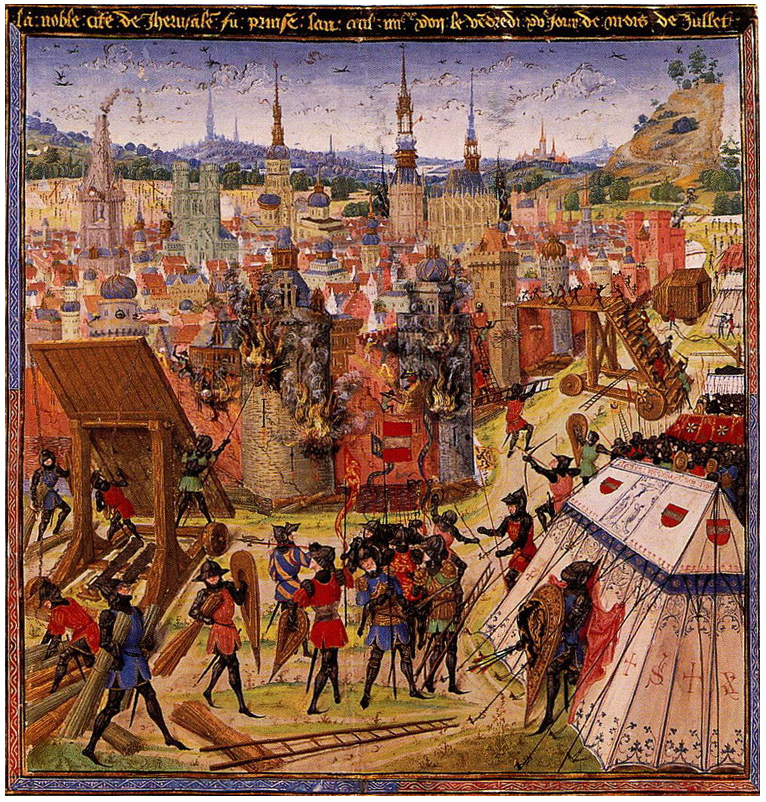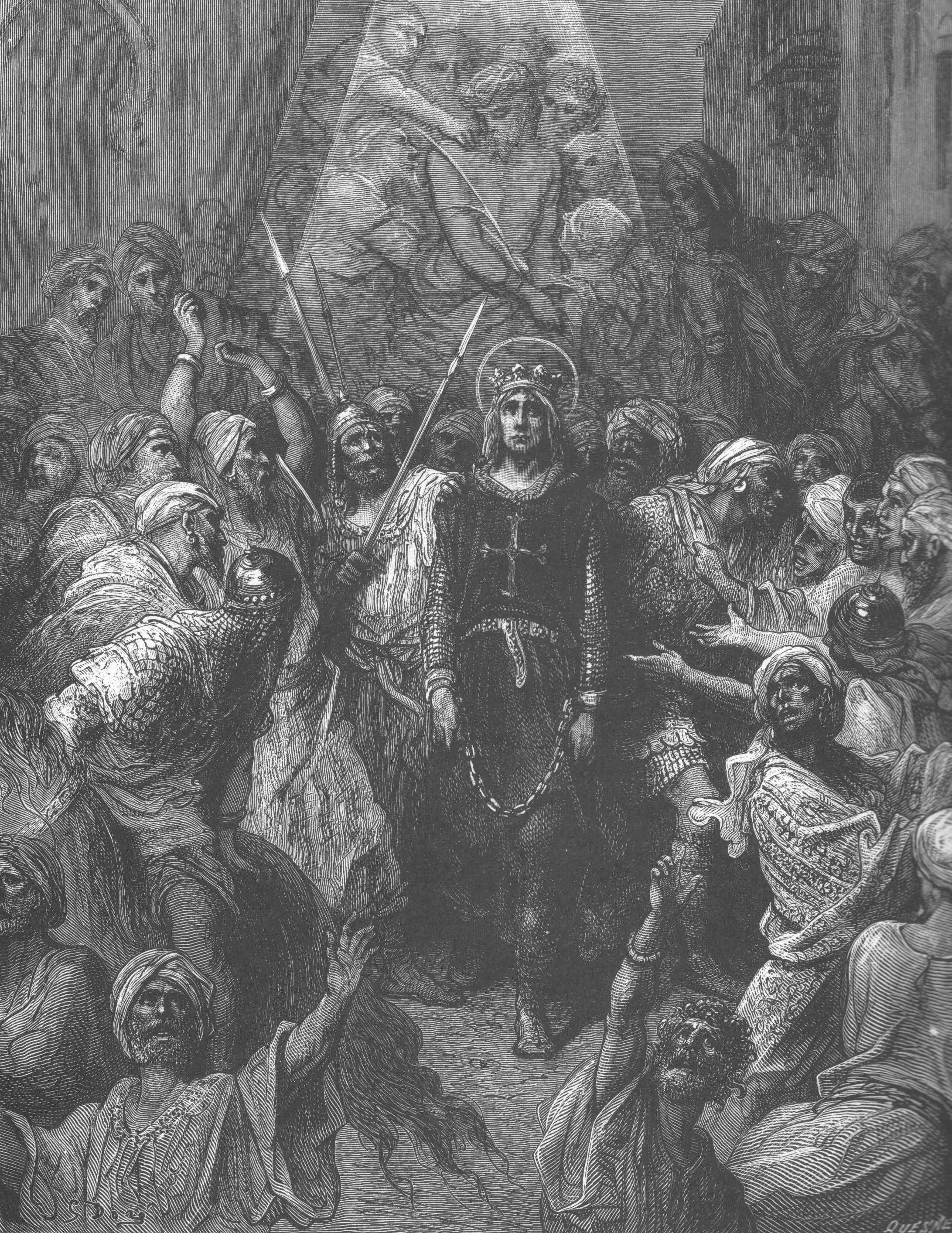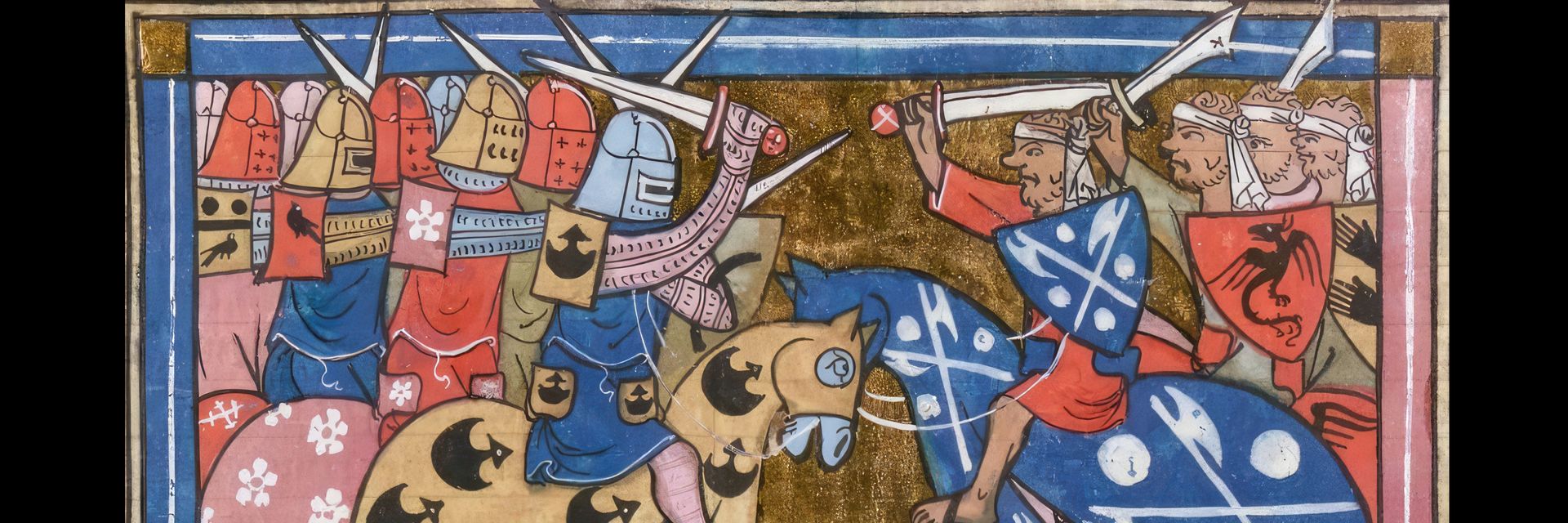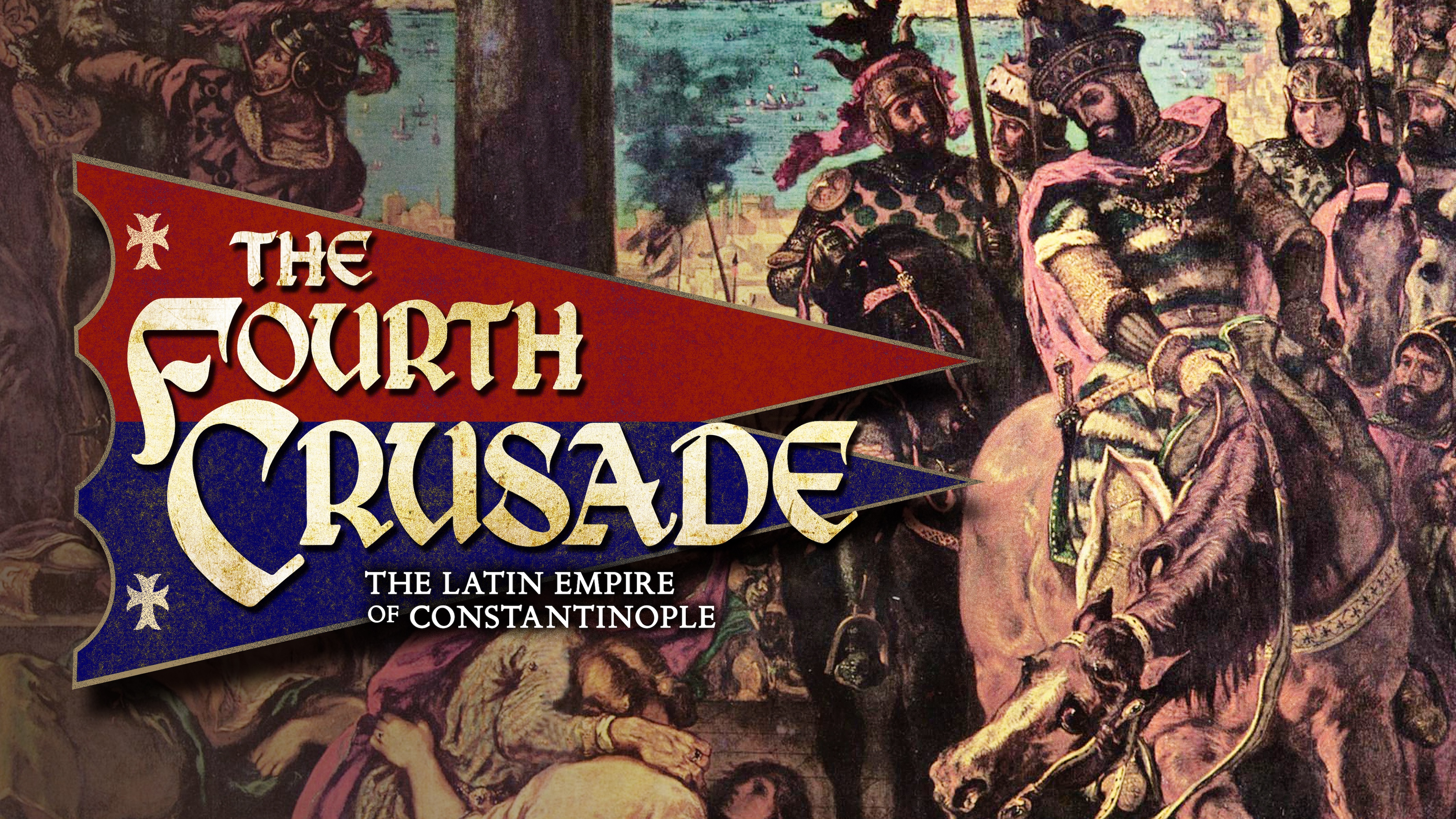Despite early victories, more than 150 years of Christian crusading failed to wrest control of the Holy Land from Muslim rulers.
◊
The Crusades were a series of religious wars sanctioned by the Catholic Church during the medieval period, primarily aimed at reclaiming Jerusalem and the rest of the Holy Land from Muslim rule. The conflicts had a profound impact on the history of the East and West, shaping medieval society, politics, and religion. Here’s a brief overview of the major Crusades:
The First Crusade (1096–1099): At the Council of Clermont in 1095, Pope Urban II called for a crusade to assist the Byzantine Empire against Seljuk Turkish encroachment and to reinstate Christian control of Jerusalem. All Western European social classes responded enthusiastically to the pope’s exhortation, providing the necessary men and resources. After an arduous journey and numerous battles, the crusaders, including the famed Knights Templar, captured Jerusalem in 1099 and established several crusader states in the region.

Capture of Jerusalem by crusaders in 1099 (Credit: unknown artist, via Wikimedia Commons)
The Second Crusade (1147–1149): After the fall of the county of Edessa, a crusader state, to the Muslims, Pope Eugene III sanctioned a new crusade under the leadership of King Louis VII of France and Emperor Conrad III of Germany. The crusade failed when they were unable to recapture Edessa and suffered a humiliating defeat in Damascus.
The Third Crusade (1189–1192): The King’s Crusade, as it is also known, was led by Holy Roman Emperor Frederick I, King Philip II of France, and King Richard I (the Lionheart) of England. The crusade was in response to the capture of Jerusalem by Saladin, the great Muslim leader. Despite successes in recapturing coastal cities, the crusaders failed to retake Jerusalem. However, Richard did manage to negotiate access to the city for Christian pilgrimages.
The Fourth Crusade (1202–1204): Initially intended to conquer Muslim-controlled Jerusalem by means of an invasion through Egypt, the Fourth Crusade took an unexpected turn. Due to a series of financial and logistical problems, the crusaders ended up sacking Constantinople, a Christian city and capital of the Byzantine Empire, severely weakening one of the main bastions of Christianity and altering the Crusades’ direction.
Dig deeper into the Fourth Crusade in this riveting documentary from MagellanTV.
The Children’s Crusade (1212): Although not formally recognized as a major crusade, it was a notable event. Thousands of children embarked on a misguided journey to the Holy Land to peacefully convert Muslims to Christianity. Most did not reach their destination, and many died or were sold into slavery.
The Fifth Crusade (1217–1221): Led by Andrew II of Hungary, Duke Leopold VI of Germany, and John of Brienne, the crusaders again aimed at capturing Jerusalem via an invasion of Egypt. They managed to capture Damietta in Egypt but failed to take Cairo, ultimately resulting in their withdrawal and a truce that lasted more than a decade.
The Sixth Crusade (1228–1229): Next up was Holy Roman Emperor Frederick II, who pursued a primarily diplomatic rather than military approach. In fact, he managed to secure the handover of Nazareth, Bethlehem, and most of Jerusalem to the Crusader states through a treaty with the Ayyubid Sultan al-Kamil.
The Seventh Crusade (1248–1254): The first of two crusades led by King Louis IX of France, the planned route to the Holy Land was again through Egypt. This one ended in failure at the Battle of Fariskur with the capture of Louis and an eventual ransom payment for his release.

French King Louis IX being taken prisoner at the Battle of Fariskur. Work by Gustave Doré, c. 1850 (Source: Wikipedia)
The Eighth Crusade (1270): Setting his sights this time on Tunis in North Africa, Louis IX met his fate before the effort had any chance of success. He died from dysentery shortly after landing, and the crusaders returned to Europe after negotiating some minor commercial and political concessions from the Hafsid dynasty.
The Crusades had far-reaching consequences beyond their religious impetus. They led to increased cultural exchanges and trade, weakened the Byzantine Empire, and altered the balance of power in the Mediterranean. Though ultimately failing to assert Christian control of the Holy Land, the Crusades exemplified the complexity of medieval politics, economics, and intercultural conflicts.
Ω
Title Image: Illustration (c. 14th century) of battle from Second Crusade (Credit: Paris, BNF, Dept. of Manuscripts, via Wikimedia Commons)


